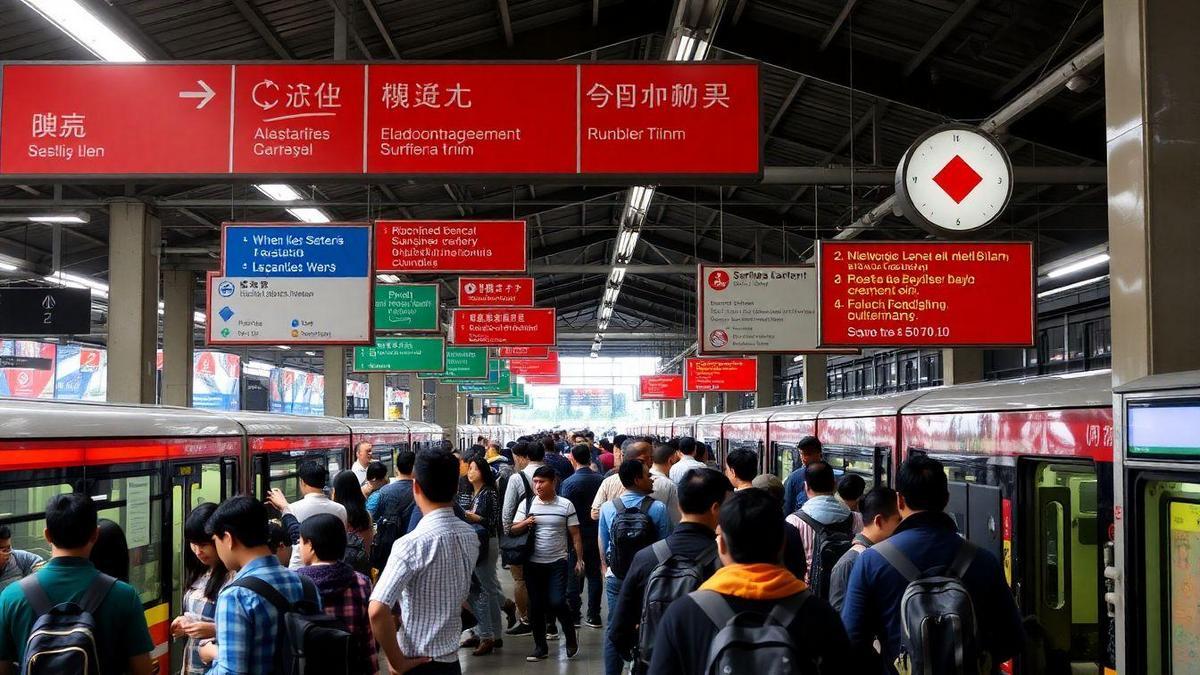Basic language essentials for navigating foreign public transportation
Basic language essentials for navigating foreign public transportation can make your travels smoother. Whether you’re hopping on a bus in a new city or catching a train to a stunning destination, knowing the right words can help you feel confident. This article will guide you through key transport terms and phrases that are must-knows for your journey. You’ll learn how to ask for directions, buy tickets, and understand timetables. Let’s get ready for exciting adventures with the right vocabulary in your pocket!
Key Takeaway
- Learn basic phrases for asking about routes.
- Know numbers to read bus or train schedules.
- Use simple words for buying tickets.
- Ask locals for help if you’re confused.
- Always carry a map or download an app.
Essential Vocabulary for Public Transportation
Key Public Transportation Vocabulary
When you’re out and about in a new city, knowing the right words can make a world of difference. Here are some key terms to keep in your pocket:
| Term | Meaning |
|---|---|
| Ticket | A pass you buy to ride the bus or train. |
| Station | A place where you catch the bus or train. |
| Route | The path a bus or train takes. |
| Transfer | Changing from one bus or train to another. |
| Fare | The amount you pay to travel. |
Common Transport Terms You Should Know
Knowing a few common terms can help you feel more at ease. Here are some words you might hear:
- Bus Stop: A designated place to wait for the bus.
- Schedule: A timetable showing when buses or trains arrive.
- Platform: The area where you wait for a train.
- Conductor: The person who checks tickets on a train.
Understanding Transit Systems with Basic Language Essentials
Understanding how to use public transportation can seem tricky, but it doesn’t have to be. Here are some basic language essentials for navigating foreign public transportation:
- Ask for Help: Don’t hesitate to ask someone for directions. Phrases like “Where is the bus station?” or “How do I get to the train?” can be very helpful.
- Read Signs: Most transit systems have signs in multiple languages. Look for symbols and colors that can guide you.
- Use Apps: Many cities have apps that provide real-time information about buses and trains. Download one to stay updated.
With these tips, you’ll be ready to hop on any bus or train with confidence!
Basic Travel Phrases for Smooth Journeys
Must-Know Phrases for Asking for Directions
When you’re wandering through a new city, asking for directions can be a lifesaver. Here are some simple phrases to help you find your way:
| English Phrase | Translation (Spanish) | Translation (French) |
|---|---|---|
| Where is…? | ¿Dónde está…? | Où est…? |
| Can you help me? | ¿Puedes ayudarme? | Pouvez-vous m’aider? |
| I’m lost. | Estoy perdido/a. | Je suis perdu(e). |
| How do I get to…? | ¿Cómo llego a…? | Comment puis-je aller à…? |
These phrases will help you connect with locals and get you where you need to go. Remember, a smile goes a long way!
Ticket Purchasing Phrases to Make Your Trip Easier
Buying tickets can be tricky if you don’t speak the language. Here are some phrases that can help you at ticket counters or kiosks:
| English Phrase | Translation (Spanish) | Translation (French) |
|---|---|---|
| I would like a ticket to… | Quisiera un boleto a… | Je voudrais un billet pour… |
| How much is a ticket? | ¿Cuánto cuesta un boleto? | Combien coûte un billet? |
| Is this the right platform? | ¿Es este el andén correcto? | Est-ce le bon quai? |
| Can I pay with a credit card? | ¿Puedo pagar con tarjeta? | Puis-je payer par carte? |
Using these phrases will make your ticket purchasing experience smoother and less stressful.
Using Basic Language Essentials for Navigating Foreign Public Transportation
Public transportation can be a bit confusing, but don’t fret! Here are some basic language essentials for navigating foreign public transportation:
| English Phrase | Translation (Spanish) | Translation (French) |
|---|---|---|
| Where is the bus stop? | ¿Dónde está la parada de autobús? | Où est l’arrêt de bus? |
| Does this train go to…? | ¿Este tren va a…? | Ce train va à…? |
| What time does the last bus leave? | ¿A qué hora sale el último autobús? | À quelle heure part le dernier bus? |
| Can I have a schedule, please? | ¿Puedo tener un horario, por favor? | Puis-je avoir un horaire, s’il vous plaît? |
With these phrases, you’ll feel more at ease when hopping on and off buses or trains.
Navigating Transit Systems with Confidence
Tips for Understanding Timetables
When you’re hopping on public transport in a foreign country, timing is everything! Here are some handy tips to help you crack the code of those confusing timetables:
- Look for Key Words: Familiarize yourself with terms like arrival, departure, and frequency. These words can help you understand when to catch your ride.
- Use Visual Aids: Many timetables have colors and symbols. Pay attention to these as they often indicate different routes or service times.
- Ask for Help: Don’t hesitate to approach someone at the station. A friendly local can help you read the timetable and point you in the right direction.
Route Guidance Vocabulary for Travelers
Knowing the right words can make a world of difference when you’re trying to find your way. Here’s a little cheat sheet of essential vocabulary for navigating public transport:
| English Term | Local Language Equivalent | Usage Example |
|---|---|---|
| Bus Stop | [Local Word] | Where is the bus stop? |
| Train Station | [Local Word] | Is this the train station? |
| Ticket | [Local Word] | I need a ticket, please. |
| Route | [Local Word] | What route should I take? |
Public Transport Etiquette: Language Tips for Travelers
Being polite goes a long way, especially in a new country. Here are some language tips to keep in mind for smooth travels:
- Say Hello and Thank You: A simple hello can open doors. Even if you can’t speak the language well, a smile and a thank you will warm hearts.
- Use Excuse Me: If you need to get past someone, saying excuse me is always appreciated. It shows respect for personal space.
- Practice Basic Phrases: Knowing a few basic phrases can be a lifesaver. Try to learn how to say Where is…? or How much is…? in the local language.
Frequently Asked Questions
What are some key phrases to know for buses?
You’ll want to know how to say “bus station,” “ticket,” and “where is it?” These phrases help you ask for directions and buy tickets.
How can I ask for help on the train?
Just say, Excuse me, can you help me? It’s simple and friendly! You can also point to your map if you have one.
What numbers should I learn for public transit?
Learn numbers like 1-10, and especially 20, 30, and 50. These numbers help with ticket prices and bus routes.
How do I learn directions in another language?
Practice words like “left,” “right,” and “straight.” These words are key when asking how to get somewhere.
Where can I find apps for language help?
Check your app store! Search for translation apps. Some even have public transportation guides that cover the basics you need for navigating foreign public transportation.

Hey, I’m Paula — traveler, language nerd, and the curious mind behind znewz.com. I’ve always believed that real connections happen through words, gestures, and shared experiences — not algorithms. That’s why I created this blog: to share travel stories from around the world and explore how language helps us connect in ways that AI still can’t. Whether I’m getting lost in a tiny town or striking up a chat in a language I barely know, I’m here to show that sometimes the best moments happen when tech takes a back seat.





